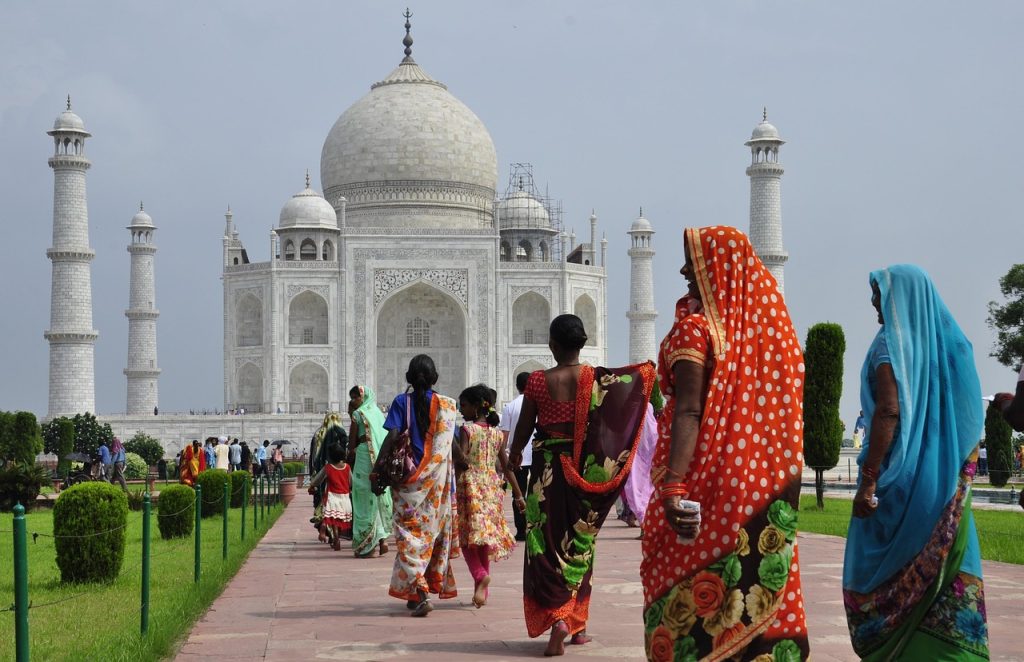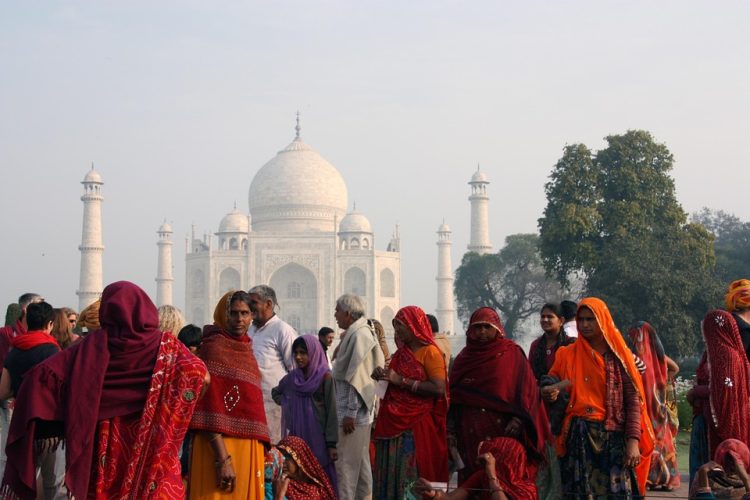India is a vast and diverse country with a rich cultural heritage that spans thousands of years. It is a place where tradition and modernity coexist harmoniously, offering visitors an abundance of experiences—from bustling cities to tranquil rural landscapes, from sacred rituals to vibrant festivals. For any traveler visiting India, understanding and respecting local customs and traditions can go a long way in making your experience more enjoyable and enriching.
India’s traditions are deeply intertwined with its spirituality, religious practices, and social norms. As a visitor, taking the time to understand these customs can help you navigate cultural nuances, avoid potential misunderstandings, and foster positive interactions with locals. In fact, respecting local traditions can greatly enhance your experience and ensure you are more warmly received by the people you meet.
In this article, we explore some essential traditional customs in India that will make your travels more immersive and may even make you more welcome among the locals.
1. Greetings and Respect for Elders
In India, greetings play a crucial role in social interactions. When meeting someone, especially elders, it is customary to offer a warm and respectful greeting. One of the most common greetings is the word “Namaste” (pronounced nah-mah-stay), which is accompanied by a gesture of pressing your palms together in front of your chest and bowing slightly. This gesture is not only a polite greeting but also a gesture of respect, symbolizing the acknowledgment of the divine presence in the other person.
In some regions, particularly in the northern parts of India, “Pranam” is also used as a greeting, which is similar to Namaste but more formal and respectful, especially when addressing elders or spiritual leaders.
Understanding and using these greetings will make you appear more culturally aware and respectful, and will help establish a positive rapport with the people you meet.
2. Dress Modestly and Respectfully
India is known for its diversity in dress codes, with different regions and cultures having unique clothing traditions. However, one consistent rule is to dress modestly, particularly in religious places and rural areas. While modern cities like Delhi, Mumbai, and Bangalore may see a more relaxed style, rural areas and temples often expect a more conservative dress code.
For both men and women, wearing clothes that cover your shoulders and knees is generally appreciated. When visiting temples or sacred places, it is customary to remove your shoes before entering, as a sign of respect. Women may also be expected to cover their heads in some religious places or while interacting with elders, depending on the region.
Wearing modest attire demonstrates cultural sensitivity and helps you blend in more naturally with the local environment, avoiding unnecessary attention or discomfort.
3. Respecting Religion and Religious Practices
India is home to several major religions, including Hinduism, Islam, Christianity, Sikhism, and Buddhism, each with its own set of traditions and practices. Religious customs are deeply embedded in the everyday life of many Indians, and a respectful understanding of these customs will help you gain trust and respect from locals.
For instance, if you are visiting a Hindu temple, it is important to follow certain etiquettes. You should enter the temple barefoot, as shoes are considered impure. It is also customary to offer prayers at the deity or statue, and if the priest offers prasad (blessed food), accepting it with gratitude is a sign of respect. Additionally, always ensure that you do not touch the temple’s sacred items or enter the inner sanctum unless invited.
When visiting mosques, non-Muslims are typically allowed in only the outer areas and must dress modestly. Women are required to cover their heads, and it is essential to remove shoes before entering the mosque. Respect for the religious practices and rituals of others goes a long way in establishing good relationships with local communities.
By being mindful of the religious practices of India’s diverse population, you demonstrate an open-mindedness and respect for the country’s heritage, which will endear you to the people you meet.

4. The Art of Giving and Receiving
In Indian culture, the exchange of gifts is a common practice, particularly when visiting someone’s home. If you are invited to a local’s home, it is polite to bring a small gift as a token of appreciation. Common gifts include sweets, fruits, or something symbolic of your own culture or country. However, avoid giving gifts made of leather or alcohol, as these may not be appreciated by some religious communities.
When receiving gifts, always accept them with both hands, a gesture that shows gratitude and respect. It’s also considered polite to express genuine appreciation for the gift, regardless of its value. In some regions, especially in rural areas, guests may be offered tea or snacks as a sign of hospitality, and it is a good gesture to accept them, as refusal can be seen as rude.
Additionally, in many parts of India, hospitality is an important value, and the concept of “Atithi Devo Bhava” (the guest is God) underscores the importance of making guests feel welcomed and respected. By reciprocating this warmth and respect, you’ll be embraced by the locals.
5. The Concept of Personal Space and Interaction
Personal space in India can be quite different from what travelers are accustomed to in the West. Indians, especially in rural or more traditional areas, may have less of a concept of personal space, and it is not uncommon for strangers to engage in friendly conversation, stand close to each other in queues, or even touch shoulders. However, in cities and urban areas, people may be more accustomed to the concept of personal space, especially in more crowded environments.
It’s important to be attuned to social cues and adjust accordingly. For instance, if you are engaging in conversation with someone, don’t be alarmed if they stand closer to you than you might expect. This is simply a cultural difference. However, be respectful and mindful not to cross any boundaries, especially with individuals of the opposite gender. Public displays of affection, such as holding hands or kissing, are generally frowned upon, particularly in more conservative regions.
Learning how to navigate these nuances will make you more comfortable and help you avoid unintentional offense.
6. Food Etiquette: Understanding Local Customs and Preferences
Indian cuisine is one of the most diverse and flavorful in the world, with different regions offering their own specialties. Food is a central part of Indian culture, and understanding local food etiquette can make your experience more enjoyable and appreciated by your hosts.
For instance, when dining with locals, it is often customary to eat with your right hand only, as the left hand is considered impure in many regions. Avoid using your left hand for serving food or passing dishes. If you are invited to a meal at someone’s home, it is polite to express gratitude for the food and eat what is offered, especially if it’s a traditional dish.
In some areas, you may be offered food in smaller portions, and it is customary to eat everything on your plate, as wasting food is seen as disrespectful. Additionally, in many Indian households, it’s considered a sign of good manners to finish your meal with a small dessert or sweet.
Being aware of food-related customs shows respect for the host’s traditions and enhances your overall travel experience.
7. The Importance of Festivals and Celebrations
India’s festivals are an integral part of the cultural fabric and are celebrated with great enthusiasm and joy. Understanding the significance of these festivals can not only deepen your appreciation for the local culture but also open doors to meaningful interactions.
For example, Diwali, the festival of lights, is one of the most celebrated events in India, and many people open their homes to friends and visitors, regardless of their background. Participating in the festivities, sharing sweets, or simply learning about the traditions can foster goodwill and camaraderie. Similarly, Holi, the festival of colors, is a time of joyful celebration, and participating in the spirit of the festival (with respect for local customs) can create unforgettable memories and connections.
Even if you’re not in India during the major festivals, acknowledging their importance and showing interest in learning more about them will go a long way in connecting with locals and demonstrating that you value their culture.
8. Environmental Respect and Public Etiquette
Finally, one of the most appreciated customs in India is the respect for nature and environmental consciousness. In many rural areas, nature is considered sacred, and visitors are expected to show reverence for the natural surroundings. When traveling, especially in more rural regions or sacred sites, avoid littering and dispose of waste responsibly.
In urban areas, people are increasingly becoming more environmentally aware, and practicing basic cleanliness and hygiene is also expected. Public spaces like temples, markets, and streets may not always have trash cans, so it’s common to carry your trash until you find an appropriate disposal place.
Respect for the environment is a sign of good manners, and by adhering to these practices, you’ll demonstrate that you understand and respect the cultural and environmental values of the region.
Conclusion: Embracing India’s Rich Traditions for a Deeper Travel Experience
Traveling through India offers an unparalleled opportunity to immerse yourself in a land brimming with ancient traditions and modern influences. Understanding and respecting India’s cultural norms, religious practices, and social etiquettes will not only make you more welcome but will also enrich your experience as you journey through this vibrant country.
When you show respect for the customs that have shaped Indian society for centuries, you open doors to deeper connections with locals, gain new perspectives, and enhance your understanding of this complex and beautiful culture. Traveling in India with cultural sensitivity can make your experience more meaningful, and in turn, you will find that India’s warm hospitality is returned to you in abundance.





















